Mitigation of Optical Multipath Interference Algorithms in IM-DD Transmission System
2024-04-28HuoJiahaoZhuJinZhuZuqingZhangXiaoyingLiuShaonanTaoJianlongWeiHuangfu
Huo Jiahao ,Zhu Jin ,Zhu Zuqing ,Zhang Xiaoying ,Liu Shaonan ,Tao Jianlong ,Wei Huangfu
1 School of Computer and Communication Engineering,University of Science and Technology Beijing,Beijing 100083,China
2 School of Information Science and Technology,University of Science and Technology of China,Hefei 230026,China
Abstract: This paper aimed to propose two algorithms,DA-M and RF-M,of reducing the impact of multipath interference (MPI) on intensity modulation direct detection(IM-DD)systems,particularly for four-level pulse amplitude modulation (PAM4) systems.DA-M reduced the fluctuation by averaging the signal in blocks,RF-M estimated MPI by subtracting the decision value of the corresponding block from the mean value of a signal block,and then generated interference-reduced samples by subtracting the interference signal from the product of the corresponding MPI estimate and then weighting factor.This paper fristly proposed to separate the signal before decision-making into multiple blocks,which signifciantly reduced the complexity of DA-M and RF-M.Simulation results showed that the MPI noise of 28 GBaud IMDD system under the linewidths of 1e5 Hz,1e6 Hz and 10e6 Hz can be effectively alleviated.
Keywords: IM-DD;multipath interference;PAM4
I.INTRODUCTION
Ethernet solutions with high-speed network communications are becoming increasingly essential for operators,enterprises,and service providers due to the rapid expansion of the data center business [1].Intensity modulation direct detection(IM-DD)has been a solution for short reach networks because of its low complexity and low power consumption[2][3].In IM-DD technology,commonly used modulation methods include discrete multi-tone (DMT) [4],carrier-less amplitude phase (CAP) [5] and four-level pulse amplitude modulation (PAM4) [6][7].PAM4 is a potential solution for the upcoming 400-G Ethernet with 8-lane 50-Gbps and the next generation 800-G Ethernet with 8-lane 100-Gbps among the aforementioned modulation formats.Although PAM4 is a promising solution,it is well-known that it has low tolerance to multipath interference(MPI)caused by multiple reflections from dirty connectors [8].In practical deployments,this drawback is a major limitation for directly detected PAM4 applications[9].
It is well known that PAM4 is very susceptible to MPI.The impact of reflection of MPI have been measured in 32 GBaud PAM4 direct detection system[9].To address MPI impairments in IM-DD systems,several patents have proposed schemes utilizing digital flitering to mitigate the effects of MPI [10-12].In[10],a tunable notch fliter was employed by digital signal processing (DSP) to fliter the received optical signal.In[11],a low-pass fliter was employed to fliter the error signal,which is then subtracted for mitigation.In[12],the mean MPI signal in radio system was subtracted to compensate for the MPI.The method mentioned above needed a large number of taps [10-12].
A method to improve the MPI tolerance of the PAMn system in the analog domain has been studied in[13].HPF was used at the receiver to suppress the carrier-carrier beating noise induced by MPI,thus reducing the effect of MPI.The order of the HPF used in[13]needs to be as high as several thousand to be effective,which is hard to realize.In[14],a hybrid code division multiplexing(CDM)coding was proposed to address MPI.However,this scheme demanded strict synchronization,and any errors in synchronization can signifciantly degrade the performance of the decoded signal.As mentioned above,the DSP algorithms at receiver is a promising solution.In [15],the corresponding error sample was generated after estimating the PAM level of each sample.Then the error samples were flitered by the low-pass fliter to obtain the estimation of the MPI.Next,an MPI estimation value with each sample was combined to produce an interference suppression sample.The signals were separated into large blocks,in which decision thresholds were calculated.Then the signals in each level were averaged[16].Based on[15][16],we made improvements and proposed two DSP algorithms at receiver.Our proposed approach differs by separating the large blocks into smaller blocks for averaging.This approach makes the signal processing more meaningful.
In this paper,we proposed two algorithms,DAM and RF-M,that can effectively suppress the MPI noise in a 28 GBaud PAM4-DD system.DA-M separated the signal before decision-making into multiple blocks,calculated the decision thresholds by averaging the signals in each block.Then,DA-M separated the block into mini blocks and averaged each mini block to reduce the fluctuation.RF-M separated the signal before decision-making into multiple blocks,calculated the decision thresholds by averaging the signals in each block.Then,RF-M separated the block into mini blocks.RF-M subtracted the decision value of the corresponding block from the mean value of the mini block,and generated interferencereduced samples by subtracting the interfered signal from the product of the corresponding MPI estimate and the weighting factor.The simulation results indicated that even the linewidth reached 10e6 Hz,both proposed algorithms can optimize the BER.
II.PRINCIPLE
2.1 Analysis of MPI Noise
Generally,the transmitted optical signalx0(t)can be expressed as,
whereA(t) represents the amplitude of the signal at the center frequencyω,andφ(t) is the phase noise.In fact,the MPI noise is caused by several reflected signal.This paper focuses on the scenario where there is only one reflected signal and Figure 1 shows an MPI affected fbier link with a pair of polluted fbier connectors and the MPI impaired PAM4 signals.The MPI impaired signal can be expressed by the unit amplitude polarization vectoras,

Figure 1.The MPI effected fiber link with a pair of polluted fiber connectors and the MPI impaired PAM4 signals.
whereαrepresents the loss factor of the reflected signal,andτrepresents the delay of the reflected signal relative to the transmitted signal.According to Eq.(2),the signal-interference ratios(SIR)can be defnied as,
The detected signaly(t) that was generated by the optical signal passing through the photodetector(PD)can be expresses as,
whereηis the PD responsivity,andϕis the relative polarization between the reflected signal and the transmitted signal.Given the valueαcould be small,the reflected signal beating with the reflected signal term can be ignored.So,Eq.(4)can be approximated as,
where Δφ(t,τ) presents the phase difference between the reflected signal and the transmitted signal.Δφ(t,τ) is a zer o-mean Gaussian random variable with varianceσ2=2ΠΔϑτ,where Δϑis the linewidth of the laser.From Eq.(5),it is evident that the MPI noise is dependent on factors of the signal amplitude,the loss factor and the linewidth.The higher the value of these factors,the more serious the MPI noise.
2.2 Priciples of DA-M Algorithms
The amplitude of the signal affected by MPI will fluctuate irregularly,which will lead to error decision and poor BER performance.We proposed DAM to suppress the MPI noise.The principle of DAM is described as follows.DA-M separated signals into blocks of lengthMand the schematic diagram is shown in Figure 2.Mrepresents separating the signal into block of lengthM.The value ofMis selected from a range of data which minimizes the BER of the processed system.The MPI noise was separated into several blocks of lengthM.Each block calculated the decision thresholds by averaging the signals.
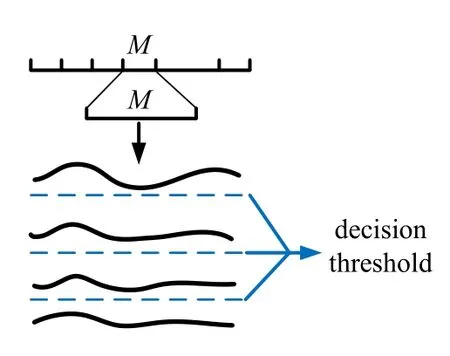
Figure 2.Signals-division before applying proposed algorithms.
Due to the part affected by MPI will produce instantaneous intensity shift,DA-M reduced the fluctuation by averaging the signal in blocks,and the schematic diagram is shown in Figure 3(a).DA-M separated the block of lengthMinto mini blocks of lengthN1.Then we averaged each block of lengthN1.DA-M can be expressed as follows:
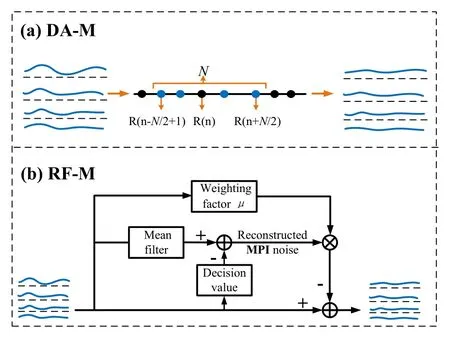
Figure 3.The scheme diagram of the proposed algorithms:(a)DA-M and(b)RF-M.
whereN1represented the length of symbols that needed to be optimized,S(i) represented the PAM4 signal affected by MPI andirepresented the data index.The value ofN1was selected from a range of data which can minimize the BER of the processed system.Eq.(6) showed that the interference was smoothed by taking the average ofN1signals before and afterS(i).For each PAM level,the fristN1/2 signals were averaged with the subsequentN1signals,while the lastN1/2 signals were averaged with the previous N signals.Eq.(7) subtracted the average value obtained from Eq.(6) from the interfered signal,resulting an error value.The error value cannot represent the optimized signal.Therefore,we used Eq.(6) instead of Eq.(7)to optimize the MPI affected signals.
2.3 Priciples of RF-M Algorithms
RF-M suppressed the fluctuation utilizing the intensity-dependent characteristic,and the schematic diagram is shown in Figure 3 (b).RF-M separated the signals into several blocks of lengthM.Then,we calculated the decision threshold of each block of lengthM.Obviously we got different decision thresholds for each signal block of lengthM.Then,RF-M separated the block of lengthMinto mini block of lengthN2and averaged each block of lengthN2.We got the MPI estimation by using the average value to subtract the decision value.The interfered signal was then subtracted from the product of the MPI estimation and weighting factor to obtain the sample with reduced interference.
The principle of RF-M was to obtain the MPI estimation by subtracting the decision value of the corresponding block from the average of the signal block.The interfered signal was then subtracted from the product of the corresponding MPI estimation and weighting factor to obtain the sample with reduced interference.RF-M can be expressed as follows:
whereSd(i) was the decision value ofS(i) andµ(i)was the weighting factor.According to previous analysis,MPI noise became more serious in the high level of PAM4 signals.So the higher the PAM level,the closer the value ofµwas close to 1.Correspondingly,the lower the PAM level,the closerµwas close to 0.The value of weighting factorµfor each level needs to be selected from a range of values which is from 0 to 1 with step of 0.1,to minimize the BER.Figure 4 shows the variation of BER for the four levels with different values ofµ,with the linewidth of 10e6 Hz and an SIR of 22 dB.The four levels of PAM4 signals from high to low are: the frist level,the second level,the third level and the fourth level.
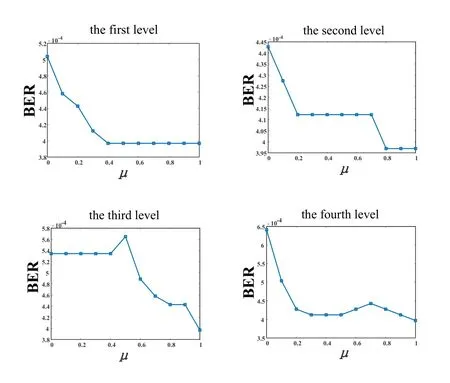
Figure 4.The selection ofµfor the four levels.
The signal before the decision was separated into blocks,with each block typically having the length of thousands.The decision thresholds were obtained by calculating the average value of each block.This signifciantly reduced the complexity of DA-M and RF-M.The DA-M algorithm requiredN1addition operations,usually several tens of times,while the RF-M algorithm requiredN2addition operations,usually dozens,and one multiplication operation.
III.SIMULATION RESULTS AND DISCUSSIONS
In order to evaluate the effectiveness of the proposed algorithms,a high-speed PAM4-DD system was built using VPI transmission Maker Optical Systems version 8.7 and MATLAB software,and the simulation setup was shown in Figure 5.
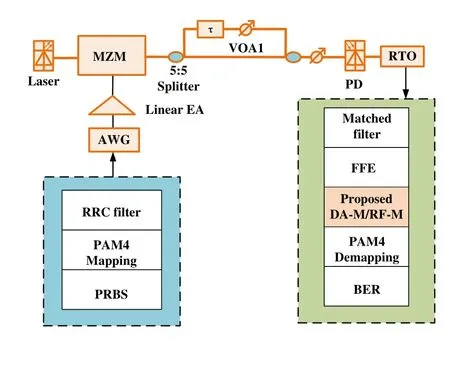
Figure 5.The simulation setup for 28 GBaud MPI impaired IM-DD transmission system.
3.1 Simulation System Construction
The transmission section was separated into two branches,one branch used for transmitting signals and the other branch simulating an MPI interference generated by a set of reflected signals with adding a delay component.The optical delay was around a few microseconds.The variable optical attenuator(VOA)on one branch was used to adjust the intensity of the reflected signal.As mentioned earlier,SIR was defnied as the power ratio between the transmitted signal and the reflected signal,and it was used to evaluate the impact of MPI noise.A higher SIR will result in a smaller MPI noise.VOA2 was used to adjust the received optical power(ROP),and it was set to-5 dBm in the simulation section.The detailed parameters were shown in Table 1.
At the transmitter,pseudo random binary sequences(PRBS)were generated and then mapped into a PAM4 format signal with a symbol rate of 28 GBaud and a symbol length of approximately 32000.The generated PAM4 signals were flitered by a root-raised cosine(RRC)fliter with a roll-off factor of 1.As shown in the Figure 6,with the linewidth of 10e6 Hz and SIR of 22 dB,observing the variation of system BER affected by MPI interference within the rolloff range from 0 to 1 with step of 0.1,it can be seen that the system performance is the worst at the rolloff of 1.We focused on algorithms for mitigating MPI interference,specifcially selecting systems with signifciant MPI impacts to facilitate observation of the algorithm’s effectiveness.Consequently,we chose to set the rolloff of the system as 1.At receiver,the PAM4 signals with MPI noise were flitered by a low-pass fliter,and the flitered PAM4 signals were sampled to 2 Sa/s.A feedforward equalizer(FFE)with 55 taps was used to compensate the impairment of signal,and the tap values were obtained using a training sequence-based leastmean square (LMS) algorithm.Then,the proposed algorithms were applied to suppress MPI noise.The PAM4 signals were demapped and the BER was calculated.

Figure 6.The measured BER performance with rolloff from 0 to 1.
3.2 Simulation Results
It can be observed that the BER performance of the signals affected by MPI noise after processing with DA-M and RF-M varied with different linewidths and SIR in Figure 7.It can be observed that DA-M and RF-M improve the BER performance with different linewidths under optical back-to-back (BTB) conditions.Moreover,RF-M showed better optimization performance than DA-M.As the linewidth increased,the optimization effect of DA-M weakened,which can be explained from Eq.(5),the increase of linewidth lead to more serious MPI noise.The more drastic the fluctuation was,the more diffciult it was to smooth the fluctuation by using DA-M.When linewidth was 1e5 Hz,the BER of MPI affected signal can be below 7% HD-FEC threshold of 3.8e-3 even when the SIR reached 14 dB.Besides,the BER of MPI impaired signal can be below the KP4-FEC threshold of 2.5e-4 even when SIR reached 18 dB,and the SIR tolerance can be improved by 2 dB via using our proposed scheme.When linewidth was 1e6 Hz,the BER can be below the 7% HD-FEC limit even when SIR reached 19 dB with the help of RF-M,and the SIR tolerance can be improved by about 2 dB.Meanwhile,the BER can be below the 7%HD-FEC limit with DAM only when the SIR reached 20 dB.When the KP4-FEC threshold was considered,SIR tolerance can be improved by about 3 dB with RF-M,while with DFM,the SIR tolerance was only improved by 1 dB.

Figure 7.The measured BER performance of 28 GBaud PAM4 signals under different laser linewidths of 1e5 Hz(a),1e6 Hz(b),and 10e6 Hz(c).
When linewidth was 10e6 Hz,the BER can be below the KP4-FEC limit when the SIR was 26 dB with RFM,and the SIR tolerance can be improved by around 3 dB.While with DA-M,the SIR tolerance was only improved by 2 dB.When the KP4-FEC limit was considered,BER can below the threshold when the SIR reached 21 dB with RF-M.Meanwhile,the BER can be below the 7%HD-FEC limit with DA-M only when the SIR reached 22 dB.It indicated that both algorithms can alleviate MPI noise for different linewidths,resulting in optimized BER performance for signals affected by MPI.
The constellation diagram corresponding to the received PAM4 signals was shown for different laser linewidths,1e5 Hz,1e6 Hz and 10e6 Hz.It was worth nothing that in order to better observe the fluctuation characteristics,two frames of signals were shown in Figure 8,with the frist frame used to observe the MPI affected signal in Figure 8(a)(d)(g),and the second frame used for calculating the BER after DA-M in Figure 8(b)(e)(h) and after RF-M in Figure 8(c)(f)(i).From the constellation diagrams of signals affected by MPI,it can be observed in Figure 8 that as the laser linewidth increased,the irregular fluctuation of the MPI affected signals became more rapid and the impact of MPI became more severe.When the linewidth was 10e6 Hz in SIR 25 dB case,both proposed algorithms can improve the BER from 1.2e-3 to 7.0e-4 with DA-M and 3.9e-4 with RF-M.Similarly,when the linewidth was 1e6 Hz in SIR 25 dB case,the proposed algorithms were also able to improve the BER from around 1.5e-3 to around 6.2e-4 with DA-M and around 3.2e-4 with RF-M.
When the linewidth was 1e5 Hz in SIR 25 dB case,the signals without processing by proposed algorithms had a BER of 0 due to less interference from MPI compared to the above linewidths.However,when the SIR was 19 dB,the signal affected by MPI had a BER of around 2.7e-4,but after being processed by DA-M,the BER was optimized to around 6.1e-5,and after being processed by RF-M,the BER was optimized to around 1.5e-5.It can be clearly seen that the proposed algorithms were effective in mitigating MPI noise.
In order to comprehensively evaluate the preformance of the proposed algorithms,the BER performance was observed by varying the ROP values with a fxied laser linewidth of 10 e6 Hz while the SIR was set to 25 dB.It can be seen that both proposed algorithms can signifciantly improve the BER performance of MPI impaired signals in Figure 9.The BER of MPI impaired signals can be below 7%HD-FEC threshold when the ROP reached -14 dBm with proposed algorithms.Besides,the BER can be below the KP4-FEC threshold when ROP reached -10 dBm,and the ROP tolerance can be improved by about 5 dB with DA-M.While with RF-M,the ROP tolerance can be improved by about 6 dB.
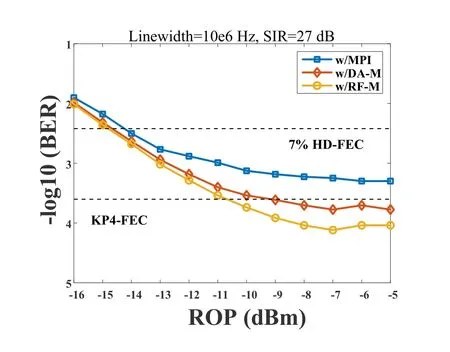
Figure 9.The BER performance of 28 GBaud PAM4 signal with proposed algorithms under the laser linewidth of 10e6 Hz with the SIR set to be 27 dB.
IV.CONCLUSION
In this paper,we proposed two algorithms,DA-M and RF-M,that can effectively suppress the MPI noise in a 28 GBaud PAM4-DD system.DA-M separated the signal before decision-making into multiple blocks,calculated the decision thresholds by averaging the signals in each block.Then,DA-M separated the block into mini blocks and averaged each mini block to reduce the fluctuation.RF-M separated the signal before decision-making into multiple blocks,calculated the decision thresholds by averaging the signals in each block.Then,RF-M separated the block into mini blocks.RF-M subtracted the decision value of the corresponding block from the mean value of a mini block,and generated interference-reduced samples by subtracting the interfered signal from the product of the corresponding MPI estimate and the weighting factor.Two algorithms effectively alleviate MPI.Simulation results showed that both algorithms can mitigate the MPI affected signals and optimize the BER.Especially when linewidth was 10 e6 Hz,the SIR tolerance can be improved by about 3 dB with RF-M.While with DF-M,the SIR tolerance was improved by 2 dB.
ACKNOWLEDGEMENT
This work was supported by the National Key Research and Development Program of China 2021YFB2900801,the Young Elite Scientists Sponsorship Program of CIC 2021QNRC001,National Natural Science Foundation of China NSFC,62201033,U22A2005,and the Foundation of the Beijing Engineering and Technology Center for Convergence Networks and Ubiquitous Services.
杂志排行
China Communications的其它文章
- Distributed Application Addressing in 6G Network
- A Support Data-Based Core-Set Selection Method for Signal Recognition
- Actor-Critic-Based UAV-Assisted Data Collection in the Wireless Sensor Network
- Integrated Clustering and Routing Design and Triangle Path Optimization for UAV-Assisted Wireless Sensor Networks
- Joint Task Allocation and Resource Optimization for Blockchain Enabled Collaborative Edge Computing
- Stochastic Gradient Compression for Federated Learning over Wireless Network
